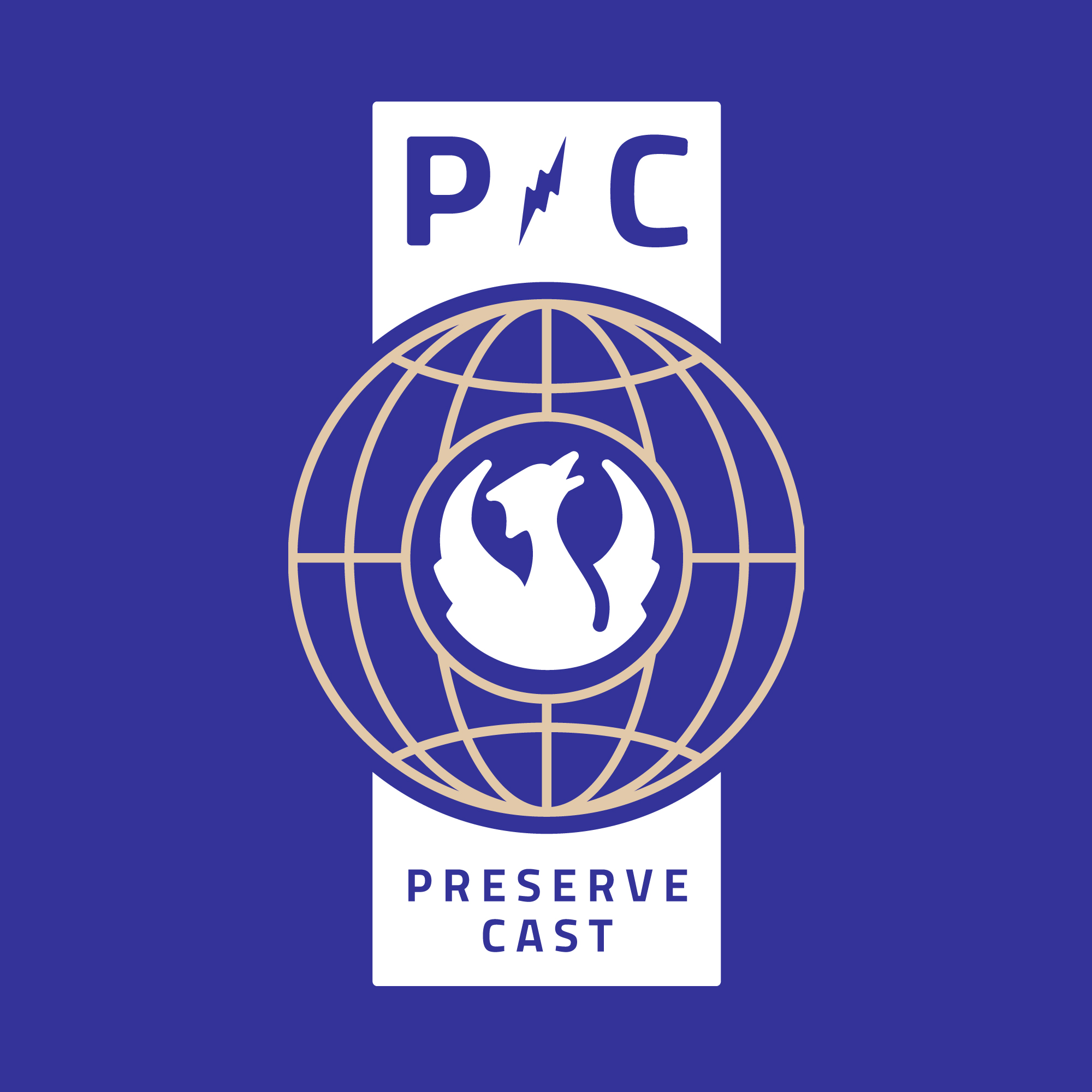Episodes

Monday Oct 12, 2020
Monday Oct 12, 2020
As a child growing up in Western New York, with Mohawk cousins, the history and world of native American culture always fascinated me. The story of the native peoples of America speak through many voices – music, art, culture – but all too often are missing from the landscape of museums and historic sites.
Today’s guest, G. Peter Jemison, is a renaissance figure in native culture, art, and heritage and also serves as the Historic Site Manager of Ganondagan State Historic Site, the location of a 17th-century Seneca town in Victor, NY.
On today’s PreserveCast, we will explore the rich history of the Iroquois and learn how their heritage continues in the present.
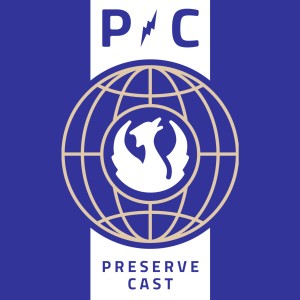
Monday Oct 05, 2020
”Eubie Blake: Rags, Rhythm and Race” with Richard Carlin and Ken Bloom
Monday Oct 05, 2020
Monday Oct 05, 2020
Today on PreserveCast, we’re talking with Richard Carlin and Ken Bloom, the co-authors of Eubie Blake: Rags, Rhythm and Race, a new biography of one of the key composers of 20th century American popular song and jazz.
A gifted musician, Blake rose from performing in dance halls and bordellos of his native Baltimore to the heights of Broadway. As successful as his career and music were, racism and bad luck hampered Blake's career. Remarkably, the third act of Blake's life found him heralded in his 90s at major jazz festivals, in Broadway shows, and on television and recordings.
Now, let’s get jazzy on this week’s PreserveCast!
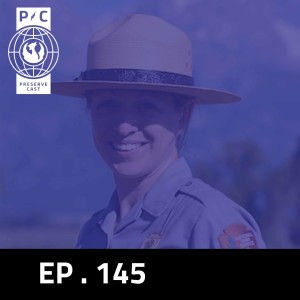
Tuesday Sep 29, 2020
Tuesday Sep 29, 2020
Wyoming is a mysterious and magical place. The very word conjures up visions of roughhewn buildings, horses, and wide open spaces. Preservation seems a natural fit in that majestic setting – and today’s guest is plying the craft and trade of preservation in Jackson Hole as the Director of the National Park Service’s Western Center for Historic Preservation. So, tighten your girth and slacken your rein, we’re headed to Wyoming to talk preservation, western style, on this week’s PreserveCast.
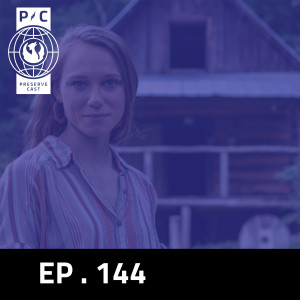
Monday Sep 21, 2020
Illuminating Southern Appalachian History at Foxfire Museum with Kami Ahrens
Monday Sep 21, 2020
Monday Sep 21, 2020
Foxfire is the bioluminescence created by some species of fungi present in decaying wood. It is a wonderfully evocative word selected by a teacher and student over 50 years ago to be the title for their new project to document life in the southern Appalachians.
What started initially as a student project has live on for decades and is today an open-air museum and outdoor village with over 20 historic log buildings and the Foxfire Archive, which consists of over 50 years of oral history interviews, images, and video.
With the light of the foxfire marking our path, on this week’s PreserveCast we’re talking with Kami Ahrens, the Assistant Curator for the Foxfire Museum about the special work they’re doing to preserve the past.
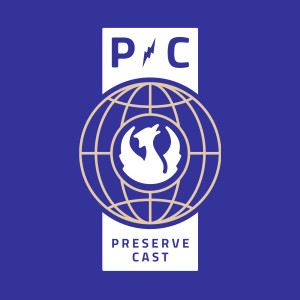
Tuesday Sep 08, 2020
Our Historical Obsession with the Unexplained with Colin Dickey
Tuesday Sep 08, 2020
Tuesday Sep 08, 2020
In a world where rational, scientific explanations are more available than ever, belief in the unprovable and irrational – in fringe – is on the rise: from Atlantis to aliens, from Flat Earth to the Loch Ness monster, the list goes on.
Enter Colin Dickey, Cultural Historian and Tour Guide of the Weird.
With the same curiosity and insight that made Ghostland a hit with readers and critics, Colin looks at what all fringe beliefs have in common, explaining that today's Illuminati is yesterday's Flat Earth: the attempt to find meaning in a world stripped of wonder.
On this week’s PreserveCast things are about to get weird as we enter The Unidentified: Mythical Monsters, Alien Encounters, and Our Obsession with the Unexplained.
![[RERELEASE] The History of Women's Suffrage with Kacy Rohn](https://pbcdn1.podbean.com/imglogo/image-logo/1486907/new-main-preservecast-podcast-graphic-simple_300x300.jpg)
Monday Aug 31, 2020
[RERELEASE] The History of Women's Suffrage with Kacy Rohn
Monday Aug 31, 2020
Monday Aug 31, 2020
It has been historically all too easy for the places associated with underrepresented communities to fall through the cracks of the historic record.
To a degree, that has been the case with the overly-simplified history presented of the Women’s Suffrage Movement. But with the recent spotlight on the 100th Anniversary of the 19th Amendment, new research and a more inclusive and accurate telling of the complex history has started to fill in those cracks.
In this rereleased episode, your host Nick Redding was joined by historian Kacy Rohn, the author of Maryland's historic context report focused on uncovering the stories of the remarkable women of Maryland's suffrage movement.
Join us for a discussion on the fight for women’s right to vote in the United States, and the power of place to help us remember that fight.
This is PreserveCast.

Monday Aug 24, 2020
Ep. 140: Gettysburg: A Touchstone of American History with Christopher Gwinn
Monday Aug 24, 2020
Monday Aug 24, 2020
Gettysburg is a special place and has been since the ground was made hallowed by soldiers nearly 160 years ago. Today, as America grapples with its history – especially its Civil War history – places like Gettysburg are critical to the understanding of who we are and where we are headed.
Today’s guest is responsible for leading the effort to interpret that history. Christopher Gwinn is the Supervisory Park Ranger for the division of Interpretation and Education and is working hard to reach all Americans with the story of Gettysburg.
Grab your knapsack and toss on your forage cap, we’re headed to the crossroads town of Gettysburg on this week’s PreserveCast.

Monday Aug 17, 2020
Monday Aug 17, 2020
When most people think of a historic site or landscape, they don’t think about the future...
Today’s guest is not most people.
Siân Phillips is a renewable energy specialist with the National Trust of England, Wales and Northern Ireland – a legendary preservation organization which is charting a new course for historic places – they’re using our past to literally power the future.
This isn’t your grandaddy’s preservation – and we’re thrilled to bring it to you on this week’s PreserveCast.
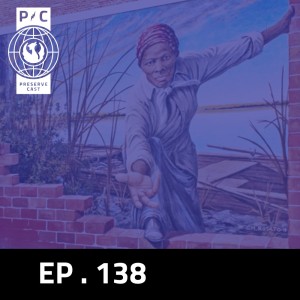
Monday Aug 10, 2020
Monday Aug 10, 2020
Few names have become as synonymous with grit, determination, and liberty as Harriet Tubman. A Moses for her people, Tubman has become an almost mythical character who represents the best of the American spirit in the face of incredible suffering and inhumanity. Yet, for many years, she lacked a rigorous and scholarly biography.
Today’s guest, Dr. Kate Clifford Larson, addressed that historical inequity and helped bring Harriet’s real story to a new generation. On this week’s PreserveCast, we're heading back to the brackish marshes of Maryland’s Eastern Shore to talk Tubman, slavery, and freedom.
PreserveCast is powered by Preservation Maryland, a non-profit organization.

Monday Aug 03, 2020
Open-Air Museums and the Historic Trades at the Genesee Country Village
Monday Aug 03, 2020
Monday Aug 03, 2020
Nestled among the verdant fields and winding streams of the Genesee River Valley in upstate New York is one of America’s largest living history museums. Founded in 1966, the Genesee Country Village & Museum features 68 historic structures from the 19th century, moved from locations throughout Western New York, a gallery of sporting art, and a nature center and attracts more than 90,000 visitors each year. On this week’s PreserveCast, we’re headed back to the 19th century to talk with Genesee Country Village & Museum CEO Becky Wehle and Curator of Collections Peter Wisbey about the future of open-air museums and the historic trades.

Monday Jul 20, 2020
Monday Jul 20, 2020
The story of where we live is uniquely personal. Many historic homes have been preserved and opened to the public – places that tell a story about the way we once lived.
However, American public housing – places built and maintained by governments – has been long been overlooked, forgotten, and worse yet, maligned.
Today’s guest, Dr. Lisa Lee, is working to solve that gap in memory and understanding as the Executive Director of the National Public Housing Museum, the only cultural institution devoted to telling the story of public housing in the United States.
Find the best spot to sit and relax in the place you call home as we talk about the history of housing on this week’s PreserveCast.

Monday Jul 13, 2020
Monday Jul 13, 2020
As America confronts, commemorates, and questions its history – preservationists like Catherine Fleming Bruce are helping to frame those conversations and providing powerful examples of how historic places can help us in these challenging times.
Bruce is the author of an award-winning book on sustaining the sacred spaces of civil rights, human rights, and social movements and how this work can support the march towards greater social justice. With her book, "The Sustainers: Being, Building and Doing Good through Activism in the Sacred Spaces of Civil Rights, Human Rights and Social Movements," she became the first African American winner of the annual Historic Preservation Book Prize, presented by the University of Mary Washington Center for Historic Preservation.
It’s a weighty topic – but one we must explore – and with someone who knows it well on this week’s PreserveCast.

Monday Jul 06, 2020
Monday Jul 06, 2020
In challenging times, nature brings us peace. From time immemorial, humans have taken to nature to soothe their anxious and tired souls. In today’s busy and built world, opportunities to experience and commune with nature are limited – but today’s guest is doing something about that.
Alden Stoner is the CEO of Nature Sacred, an organization dedicated to bringing natural sanctuaries to urban communities to reduce stress, improve health and strengthen communities. It is work that was important before and is becoming increasingly more important every day the nation confronts its current challenges.
Take a deep breath and find your favorite tree – we’re talking nature in urban spaces on this week’s PreserveCast.

Monday Jun 29, 2020
Monday Jun 29, 2020
Americans have long admired the resistance, tenacity and spirit of those brave souls who were travelers and conductors on the Underground Railroad. On this week’s PreserveCast, we’re heading back to those days to dredge up another chapter – and one far less proud – that of the reverse Underground Railroad which brought captured formerly free blacks back to slavery. It’s a difficult history – but one we must confront and we’ll explore it with Dr. Richard Bell, a distinguished scholar who recently authored a book on this overlooked story from American history.
Dr. Richard Bell is Associate Professor of History at the University of Maryland. He holds a PhD from Harvard University and is author of the new book Stolen: Five Free Boys Kidnapped into Slavery and their Astonishing Odyssey Home. He has won more than a dozen teaching awards, including the University System of Maryland Board of Regents Faculty Award for Excellence in Teaching, the highest honor for teaching faculty in the Maryland state system. He has held major research fellowships at Yale, Cambridge, and the Library of Congress and is the recipient of the National Endowment of the Humanities Public Scholar award. He serves as a Trustee of the Maryland Historical Society, as an elected member of the Colonial Society of Massachusetts, and as a fellow of the Royal Historical Society.

Monday Jun 22, 2020
Monday Jun 22, 2020
As the nation confronts a crippling pandemic – we find ourselves drawn to history for parallels. History provides context for the confusion.
Today’s guest has dedicated her career to exploring those connections. Dr. Marian Moser Jones is a social historian and ethicist of public health who studies the way in which Americans care for other Americans – and how that shapes our response in emergencies like the current pandemic.
Stay calm – we’ll get through this – and we’ll learn how on this week’s PreserveCast.

Monday Jun 15, 2020
Monday Jun 15, 2020
For Civil War readers and historians, Maryland has always been confounding. Its location along the Mason-Dixon Line meant it was the seat of war for many pitched battles – and divided the loyalties of its citizens. But, for all the impact, bloodshed and division – its contribution to the Union Army is often overlooked. Confederate memory clouds the history – but today, the clouds are lifting thanks to the work of professor and historian Timothy Orr. Dr. Orr has begun to chronicle Marylanders who served in the ranks of the Union Army of the Potomac – a story long overdue that we’ll begin to explore on this episode of PreserveCast.
MORE ABOUT OUR GUEST
Timothy J. Orr is Associate Professor of History at Old Dominion University. He earned his Ph.D. at the Richards Civil War Era Center at Penn State University and he worked for eight years as a seasonal Park Ranger at Gettysburg National Military Park. His publications include Last to Leave the Field: The Life and Letters of First Sergeant Ambrose Henry Hayward (University of Tennessee Press, 2011), Never Call Me a Hero: A Legendary American Dive-Bomber Pilot Remembers the Battle of Midway, a volume co-authored with N. Jack “Dusty” Kleiss and Laura Lawfer Orr (William Morrow, 2017), as well as several scholarly essays about the Army of the Potomac.

Monday Jun 01, 2020
Monday Jun 01, 2020
Few guests to PreserveCast have commanded as large an audience as today’s guest, Ruth Goodman.
Ruth is an award-winning social and domestic historian of British history who has been involved in several highly-rated BBC television series and has used her knowledge and charm on the screen to make history approachable and interesting.
On this week’s PreserveCast we’re crossing the pond to learn from a master of public history in a time when history matters more than ever before.

Monday May 25, 2020
Monday May 25, 2020
Born in an 1850s Greek Revival home that was lovingly restored by her parents (and having attended more country auctions than she can count), Elizabeth Finkelstein’s love for crown molding and decorative ironwork runs in her gene pool. After high school, she left the quiet of the countryside for the bright lights of the big city to entrench herself in New York’s great history and architecture. While there, she earned a Masters in Historic Preservation and spent years working in the field of professional preservation advocacy (and started a few geeky architecture blogs to boot!).
A licensed tour guide, professor and architectural historian, Elizabeth is also Country Living Magazine‘s official real estate columnist. Through @circahouses and @cheapoldhouses, Elizabeth is proud to maintain two of the most popular Instagram feeds devoted specifically to historical homes for sale. The wildly popular, viral feed @cheapoldhouses has been featured in New York Magazine, The Financial Times, Money Magazine, Buzzfeed, and numerous other influential publications.
Elizabeth and her husband Ethan fantasize simultaneously about owning a Brooklyn brownstone and buying a big, old farmhouse somewhere far, far away. In the meantime, CIRCA keeps them dreaming...

Monday May 18, 2020
Monday May 18, 2020
Few names are as synonymous with Civil War battlefields as “The Bloody Cornfield.” It conjures up visions of harrowing bloodshed and the tragedy of fratricidal combat.
Yet, for over 150 years, the story of this struggle has been difficult to track – the sway of battle back and forth over David R. Miller’s cornfield was a confusing melee of destruction. To help interpret this pivotal story, historian and author David A. Welker has produced a detailed study of this pivotal moment in American history which captures the reader and makes the compelling case for the national significance of these 20+ acres of Maryland soil.
On this week’s PreserveCast, we’re taking a trip back to Sharpsburg, Maryland, on the morning of September 17, 1862, and descending into the Bloody Cornfield.

Monday May 11, 2020
Monday May 11, 2020
Dr. Harrison Goodall has over forty-eight years of experience with historic structures and facilities management and nearly sixty years of experience in training and education throughout the country. As a contractor, volunteer, and purveyor of preservation materials, Harrison has been involved in preserving hundreds if not thousands of historic structures around the nation. A 2016 award from the National Park Service documented that Goodall completed over 135 volunteer historic preservation projects in 55 national parks and over 40 of those projects took place in Grand Teton National Park, where he has volunteered consistently since 1976. On This week’s PreserveCast, we’re sitting down to talk with a preservation trades legend about the future of craft and the lessons learned restoring America’s most iconic places.

Monday May 04, 2020
Monday May 04, 2020
Today’s guest is a first for PreserveCast.
Aimee Jorjani was appointed by the President of the United States to be the first full-time chairman of the Advisory Council on Historic Preservation – the federal agency tasked with coordinating preservation policy across the government.
From the halls of Congress to the pueblos of the southwest – Chariman Jorjani is doing her bit to promote preservation and we’ll learn what she’s planning next on this week’s PreserveCast.
ABOUT OUR GUEST
Aimee Jorjani earned Senate confirmation in June 2019 as the first full-time chairman of the Advisory Council on Historic Preservation (ACHP).
Ms. Jorjani has nearly 20 years of experience in the fields of government and cultural resources from a variety of perspectives including both executive and legislative branches, as well as the non-profit sector. Her career began on Capitol Hill in 1999 working as a legislative aide to Rep. Paul Ryan (R-WI). In 2002, she moved to the US Department of the Interior (DOI) and held several positions, including serving as the Deputy Secretary’s Special Assistant for Historic Preservation.
A native of Milwaukee, Wisconsin, Ms. Jorjani graduated from Northern Michigan University with a major in political science and minor in public relations and later earned a Masters in Historic Preservation from Goucher College.

Monday Apr 27, 2020
Monday Apr 27, 2020
Walt Whitman once wrote that, “Future years will never know the seething hell and the black infernal background of countless minor scenes and interiors . . . of the Secession war; and it is best they should not—the real war will never get in the books.”
Although the painful, real stories of the Civil War and its grisly impacts may not have been accurately captured by authors – today’s guest, Jake Wynn, the Director of Interpretation at the National Museum of Civil War Medicine, is dedicated to telling those stories – and highlighting the grave sacrifices and incredible compassion displayed during that era.
As we confront a medical crisis in our own time, we sat down with Jake to learn about epidemics, disease, and health during the Civil War – and what lessons there might be for our own time.
ABOUT TODAY'S GUEST
Jake Wynn is the Director of Interpretation at the National Museum of Civil War Medicine and the Clara Barton Missing Soldiers Office Museum. He is a 2015 graduate of Hood College in Frederick, MD. He writes independently about Pennsylvania history at Wynning History and the Pennsylvania in the Civil War blog.
![PreserveCast: [BONUS] Hear the Burns Violin from the National Trust of Scotland thanks to The 1772 Foundation](https://pbcdn1.podbean.com/imglogo/image-logo/1486907/new-main-preservecast-podcast-graphic-simple_300x300.jpg)
Monday Apr 20, 2020
Monday Apr 20, 2020
On this special extra edition of PreserveCast, you'll hear from one of Preservation Maryland and PreserveCast's best friends, Mary Anthony, Executive Director of The 1772 foundation as she interviews her friends with the National Trust of Scotland about a very special fiddle. Just to *see* this 270-year-old violin in a glass case, you'd have to travel to the Robert Burns Birthplace Museum in Alloway, Scotland – but today you'll **hear** it and all about it...on this special recording of PreserveCast.

Monday Apr 06, 2020
Monday Apr 06, 2020
Why do we do what we do and why don’t others understand why it’s so important?
Those are the driving questions that prompted long-time preservationist and real estate expert Tom Moriarity to dive into a discourse on what preservation needs in the years ahead. It’s a big task – but one that we need to constantly revisit if we hope to save places that truly matter.
So, prepare yourself for some real talk from one of America’s most trusted voices in preservation on this week’s PreserveCast!
![PreserveCast Ep120: [Heathly, Hip & Historic] The Future of History by Greg Werkheiser, Cultural Heritage Partners](https://pbcdn1.podbean.com/imglogo/image-logo/1486907/new-main-preservecast-podcast-graphic-simple_300x300.jpg)
Friday Mar 27, 2020
Friday Mar 27, 2020
In this final episode of PreserveCast's special Healthy, Hip & Historic series, Greg Werkheiser of Cultural Heritage Partners and ARtGlass presents the awesome opportunities that preservationists have to shape the telling of history well into the future – if, we tap into trends afoot in augmented reality, drone imaging and 3D printing, and artificial intelligence.
Greg Werkheiser is a lawyer and entrepreneur who builds ventures that connect the lessons of our past to the leadership of our future. Greg believes that solving critical societal challenges requires leaders who draw on wisdom and strategy from across time, culture, sector, industry, and ideology. To preserve and leverage history, Greg’s ventures advance law, public policy, business strategy, and technology in the cultural heritage field globally. To forge leaders for our age, Greg’s ventures re-imagine leadership development for emerging entrepreneurs of public, private, and social enterprises. To enable all to serve and lead, Greg advocates for civil rights of oppressed communities.
Greg is the co-founder of Cultural Heritage Partners, the premier law, government affairs, and business strategy firm serving exclusively heritage-mission clients, including governments, professional associations, museums, tribes, preservation organizations, private businesses, families, and individuals. He also founded the aligned leadership consulting firm, the Heritas Group. He is also the founding CEO of ARtGlass, wearable augmented reality company helping cultural sites and museums create mind-bending experiences for visitors.

